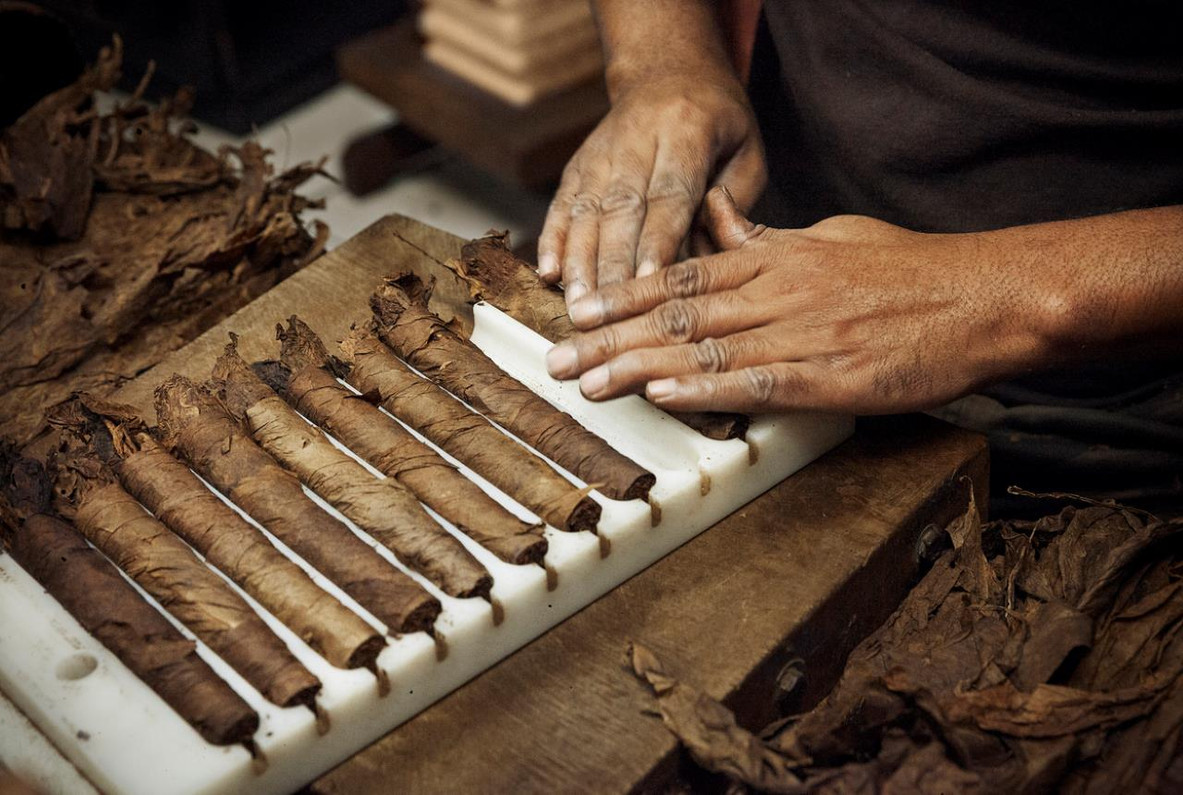How to Rehydrate a Cigar
If you find yourself with a cigar that's lost its supple charm and turned a bit too crisp, you’re not alone. It’s a common issue, but fear not—bringing that cigar back to its former glory is quite doable. In this blog, we’ll guide you through the essential steps of how to fix a dry cigar quickly, even if you don’t have a humidor handy. Let’s take a closer look!
Signs of a Dry Cigar
Identifying a dry cigar is the first step in the rescue process. If you’re noticing that your cigar feels unusually brittle, with a rough, cracking outer wrapper, it’s signaling for help. Additionally, a dry cigar might burn faster than usual, offering a harsh, unpleasant smoke. These are clear cries for rejuvenation, so let's delve into the how and why of moisture's role in cigar storage.
The Science of Cigar Humidity
Understanding the science behind cigar humidity can prevent future mishaps. Cigars are best preserved at a humidity level of about 70%. This specific moisture level mimics the natural tropical climates where most cigars are made, allowing the tobacco to maintain its elasticity, color, and flavor. When the humidity drops, the leaves dry out, leading to the issues you’re facing.
Preparing to Rehydrate a Cigar
Before you rehydrate your cigar, ensure it’s clean and free from any mold or dust. This will prevent any unpleasant flavors or further damage during the rehydration process. Then, gather the necessary materials depending on the method you choose, which could range from a simple zip-lock bag to a specialized humidor.
Gradual Rehydration Methods

For those of you without a humidor, here are a few tricks to fix a dry cigar quickly and safely. One effective method is to place the cigar in a zip-lock bag with a damp sponge placed far from the cigar itself. Seal the bag and check daily, adjusting the moisture level by the dampness of the sponge. This method reintroduces moisture slowly, preventing the wrapper from cracking.
Another approach is to use a terracotta humidifying stone, typically soaked in distilled water. After soaking the stone, place it in a sealed container with the cigars. The porous nature of terracotta releases moisture gradually, which is perfect for rehydration without overwhelming the cigar.
Using a Humidor for Rehydration
Ultimately, using a humidor is the most efficient and controlled method for rehydrating cigars. For those looking to invest in the longevity of their cigars, consider our selection of electric humidors. These devices maintain a consistent humidity level, which is crucial for slowly and evenly rehydrating dry cigars. Simply start with a lower humidity setting and gradually increase it to avoid shocking the cigars with a sudden change in environment.
Alternative Rehydration Techniques
If you don't have access to traditional rehydration tools, there are still ways to save your dry cigars with some creativity. An effective makeshift technique is the use of a piece of damp bread or a potato slice. These can be placed in a sealed container with your cigars; they release moisture slowly, mimicking more sophisticated methods.
Another unorthodox method involves placing your cigars in a cooler environment with a larger humidification source, such as a wet towel over a rack. The key here is to ensure the environment is sealed and the moisture source does not directly touch the cigars, to prevent mold growth and ensure even humidity distribution.
Mistakes to Avoid During Rehydration
When trying to revive your cigars, there are several common errors you should steer clear of to prevent ruining them. First, avoid quick fixes that promise to restore cigars instantly; rapid rehydration can cause the wrappers to split as the tobacco expands unevenly.
Also, using non-distilled water can introduce harmful minerals and chemicals that taint the tobacco’s flavor and potentially damage its structure. Additionally, do not place cigars directly next to the moisture source, as this can lead to uneven rehydration and mold. Lastly, always monitor the humidity levels closely—whether using a hygrometer in a humidor or gauging the dampness in a DIY setup—to ensure that conditions remain optimal for cigar preservation without overdoing it.
The Bottom Line
Overall, successfully rehydrating your dry cigars is very much about balance and patience. Whether you opt for gradual, traditional methods using tools like humidors, or explore alternative techniques, the key is to reintroduce moisture in a controlled manner.
With these tips and careful attention, you can restore your cigars to their optimal condition and enjoy their full flavor and ideal burn. So, take your time, use the right methods, and your patience will be richly rewarded with perfectly revived cigars. And if you're looking to invest in a long-term solution, consider checking out the selection of electric humidors on our website to ensure your cigars remain in prime condition year-round.
Recent Posts
-
The Ultimate Guide to Cigar Etiquette
Cigar smoking, like any pleasurable pursuit, draws people from many different walks of life. Some ci …1st May 2024 -
How to Rehydrate a Cigar
If you find yourself with a cigar that's lost its supple charm and turned a bit too crisp, you’re no …23rd Apr 2024 -
What Cigar Does Michael Jordan Smoke?
For those who admire both the game of basketball and the art of cigar smoking, Michael Jordan stands …23rd Apr 2024




